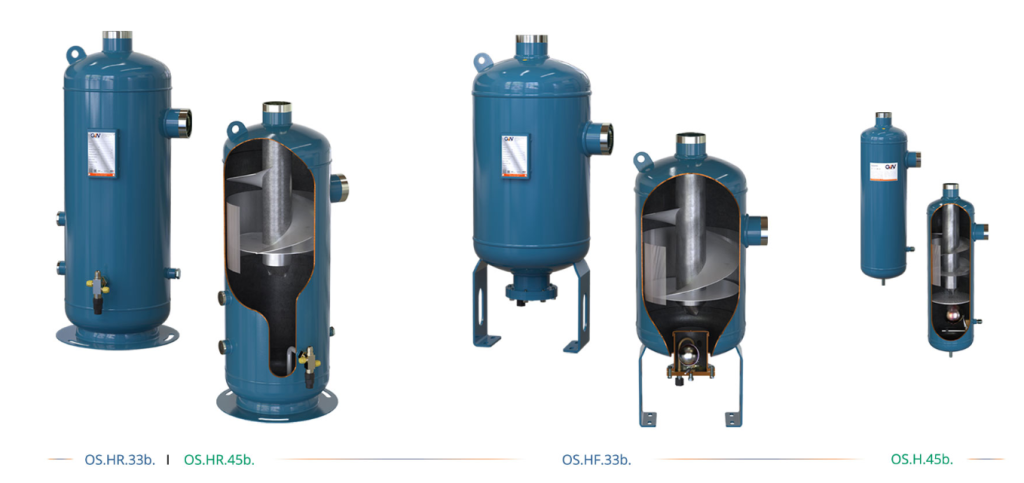Introduction
The task of the helical oil separators is to separate oil from the discharge refrigerant correctly and ensure oil return to the compressor most effectively. The purpose is to maintain crankcase oil level and increases the efficiency of the system by minimizing the excessive oil circulation. Helical oil separators are designed for low pressure oil management systems, they can be used in various systems and multiple compressors. Helical system and stainless filter system in the product are more effective in separating oil than standard oil separators. The surface of the oil separator is wrapped with a stainless filter, so that heavier oil particles adhere through helical path, separate from discharge refrigerant and drains. Gas/oil mixture is moved along spiral path by centrifugal force, and oil particles revolve on surface of perimeter and collide with layer. Oil drains from the filter screen to the reservoir at the bottom. Refrigerant passes through the filter and leaves the oil separator from outlet connection. When oil level rises in the reservoirs, float ball rises and oil returns to the crankcase by passing through oil return connection.
OS.H.45b Helical Oil Separators
Helical oil separators perform oil separation in the same way as the conventional oil separator. Unlike OS.30b series, there are stainless helical fins inside the separator and a mesh filter in the outlet pipe. The refrigerant gas moves along the helical surface, heads towards the chamber and leaves the separator by passing through the filter at the outlet after it enters the separator. It hits more surfaces with centrifugal force as the refrigerant passes through the helical surface. The oil accumulated on the helical surfaces and the filter is filtered and collected in the chamber. When the amount of oil reaches the desired level, the float opens and the oil is sent directly to the compressor or oil tank. Efficiency in this series is increased to 99% with the centrifugal effect. All kinds of metal parts are easily caught with the magnet in the floating part at the oil outlet and the floater works in a cleaner environment. Helical oil separators are suitable for systems with low pressure lubrication as they have a float valve system. It can be directly connected to reciprocating and scroll compressors. It is not recommended for use in screw and rotary compressors. Always make sure that the float system is not damaged and is in working condition. The outer body is made of carbon steel, the float part is made of stainless steel, the float needle is made of stainless steel or brass, and the oil return pipe is made of brass.
OS.HF.33b Helical Oil Separators & Flange
Helical oil separators & flange have the same function as helical oil separators. The difference from the OS.H.45b series is that it has a removable flanged structure for cleaning the float system. Flange type helical oil separators should be preferred in systems that require cleaning and replacement.
OS.HR.33b – OS.HR.45b Helical Oil Separators & Reservoir
Helical oil separators with reservoir perform oil separation in the same way as the helical oil separator. Unlike the OS.H.45b series, there is no float system and it has an oil storage chamber. The oil that separates on the helical surface is filtered and accumulates in the storage chamber. Since helical oil separators do not have a float system, they are suitable for systems with high pressure lubrication. It cannot be directly connected to reciprocating and scroll compressors. It is recommended to be used together with DEKA electronic oil level regulator.

Source & credit :- http://www.gvn.com.tr/helicaloilseparator_2_36.htm
